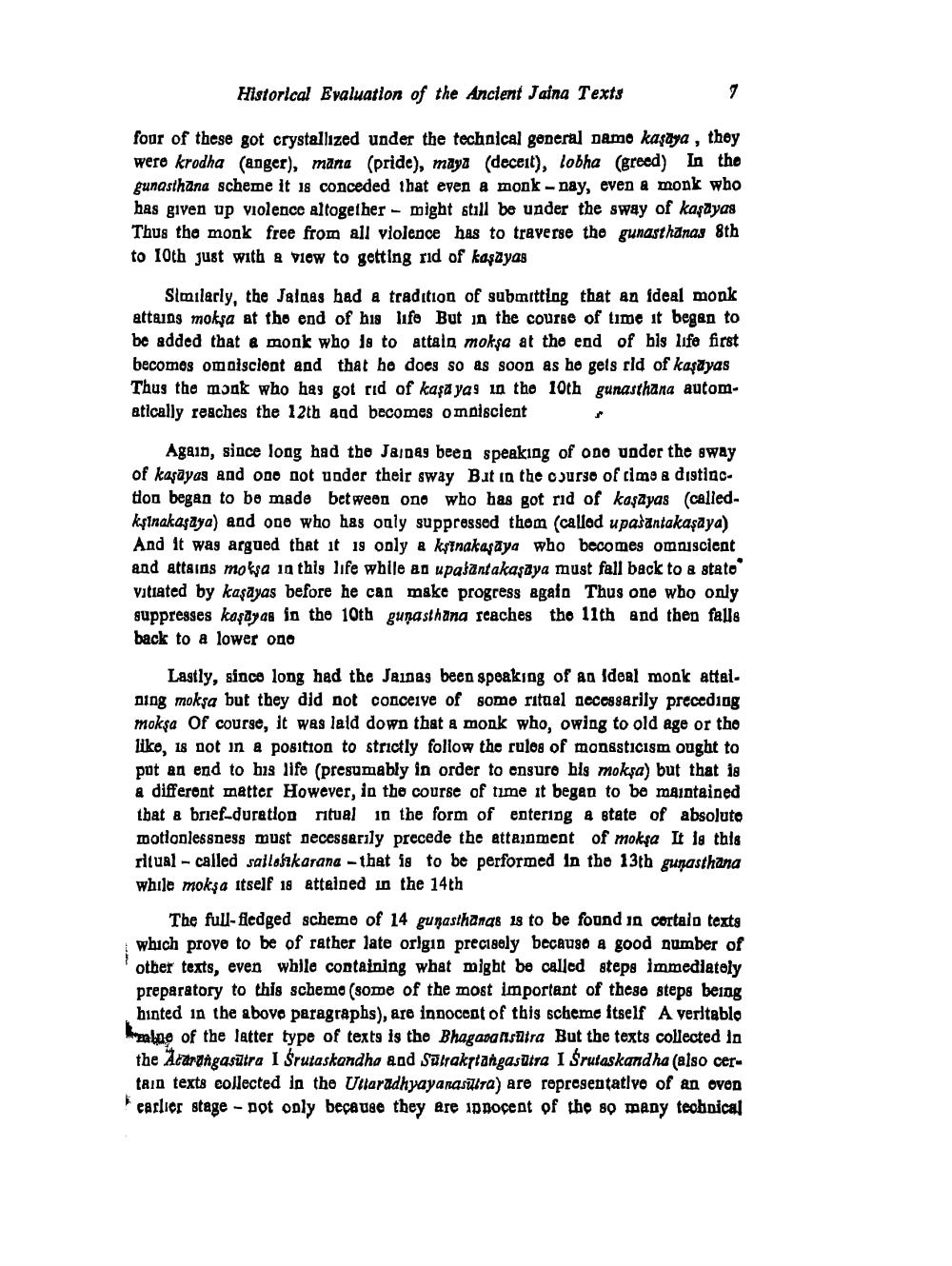Book Title: Sambodhi 1972 Vol 01 Author(s): Dalsukh Malvania, H C Bhayani Publisher: L D Indology Ahmedabad View full book textPage 9
________________ Historical Evaluation of the Ancient Jaina Texts four of these got crystallized under the technical general damo kaşaya , they were krodha (anger), mana (pride), maya (deceit), lobha (greed) In the gunasthana scheme it is conceded that even a monk - nay, even a monk who has given up violence altogether - might still be under the sway of kaşayas Thus the monk free from all violence has to traverse the gunasthanas 8th to 10th just with a view to getting rid of kaşayas Similarly, the Jalaas had a tradition of submitting that an ideal monk attains mokşa at the end of his life But in the course of time it began to be added that a monk who is to attain moksa at the end of his life first becomes omoisclont and that he does so as soon as he gets eld of kaşqyas Thus the monk who has got rid of kaşa yas in the 10th gunasthana automatically reaches the 12th and becomes omniscient Again, since long had the Jainas been speaking of one under the away of kaşāyas and one not under their sway But in the course of time a distinc. tlon began to be made between one who has got rid of kaşayas (calledksinakasaya) and one who has only suppressed them (called upadantakaşaya) And It was argued that it is only a kšinakasaya who becomes omniscient and attains molsa in this life while an upalantakaşaya must fall back to a stato vitiated by kaşayas before he can make progress agaio Thus one who only suppresses kaşdgas in the 10th gunasthang reaches the 11th and then falle back to a lower ono Lastly, since long had the Jainas been speaking of an ideal monk attelning moksa but they did not conceive of somo ritual accessarily preceding moksa Of course, it was lald down that a monk who, owing to old age or the like, 18 not in a position to strictly follow the rules of monasticism ought to pat an end to his life (presumably in order to ensure his mokşa) but that is a different matter However, in the course of time it began to be maintained that a brief-duration ritual in the form of entering a state of absoluto motionlessness must necessarily precede the attainment of moksa It is this ritual - called sallonkarana - that is to be performed in the 13th gunasthana while mokşa itself 18 attained in the 14th The full-fledged scheme of 14 gunasthanas is to be found in cortalo texts which prove to be of rather late origin precisely becauso a good gumber of other texts, even wblle containing what might be called steps immediately preparatory to this scheme (some of the most important of these steps being hinted in the abovo paragraphs), are innocent of this scheme itself A veritable Harpalne of the latter type of texts is the Bhagavansutra But the texts collected in the Acarangasūtra 1 Srutaskandha and Salraktangasutra I Srutaskandha (also certain texts collected in the Ultaradhyayarasitta) are representative of an oven earlier stage - Dot only because they are in Doçent of the so many technicalPage Navigation
1 ... 7 8 9 10 11 12 13 14 15 16 17 18 19 20 21 22 23 24 25 26 27 28 29 30 31 32 33 34 35 36 37 38 39 40 41 42 43 44 45 46 47 48 49 50 51 52 53 54 55 56 57 58 59 60 61 62 63 64 65 66 67 68 69 70 71 72 73 74 75 76 77 78 79 80 81 82 83 84 85 86 87 88 89 90 91 92 ... 416
